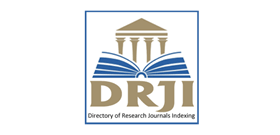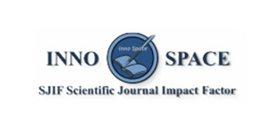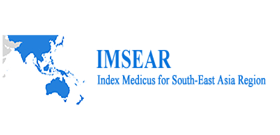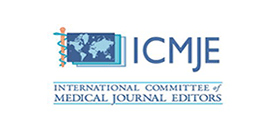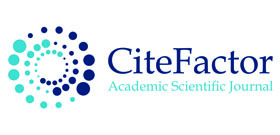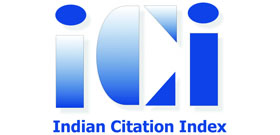Table of Content
Era's Journal of Medical Research: Volume-12 Number-1, 2025
Evaluating the Impact of Data Analytics Training in Health Professions Education: A Pretest-Posttest Analysis
Shahid Hassan1, Sonia Jaiswal2, Gauhar Hassan3 1Department of Anatomy, American University of Barbados School of Medicine, School of Medicine, Barbados. 2Department of Medical Education, American University of Barbados School of Medicine, School of Medicine, Barbados. 3Department of Anatomy, Era's Lucknow Medical College and Hospital, Era University, Lucknow, UP, India Download PDF
Download PDF
 View in XML
View in XML
 View in DOI
View in DOI
Impact of Socioeconomic Status on COVID-19 Severity among Urban and Rural areas in India
Mohammad Abbas1,2 , Shania Abbas2, Shrikant Verma1 , Sheeba Afreen1 , Sushma Verma1,2, Farzana Mahdi1 1Department of Personalized and Molecular Medicine, Era University, Lucknow, UP, India 2 Department of Biotechnology, Era University, Lucknow, UP, India Download PDF
Download PDF
 View in XML
View in XML
 View in DOI
View in DOI
Microglial Mitigation: A Novel Avenue for Antidepressant Research
Ausaf Ahmad Amity Institute of Biotechnology, Amity University, Lucknow, UP, India-226028 Download PDF
Download PDF
 View in XML
View in XML
 View in DOI
View in DOI
Clinical Relevance and Implementation of Antimicrobial Stewardship in Hospital Environments: A Review
Dinah Lorde1, Zahid Siddiqui2, Phebe Samuel3, Danial Saeed3, Sarah Hassan4, Samiya Qidwai5 1Pre-Medical Science, American University of Barbados School of Medicine, Wildey, Bridgetown, Saint Michael, BB11100, Barbados 2Department of Pathology, American University of Barbados School of Medicine, Wildey, Bridgetown, Saint Michael, BB11100, Barbados 3American University of Barbados School of Medicine, Wildey, Bridgetown, Saint Michael, BB11100, Barbados 4Department of Microbiology, Era’s Lucknow Medical College Hospital, Era University, Lucknow, UP, India 5Era’s Lucknow Medical College & Hospital, Era University, Lucknow, UP, India Download PDF
Download PDF
 View in XML
View in XML
 View in DOI
View in DOI
Herbal Medicines: An Extensive Analysis of Polyherbal Treatments for Metabolic Syndrome
Vivek Ranjan Patel1, Akshay Kumar Gupta2, Jyoti Dwivedi1, Utkarsh Singh Tomar1, Aparna Misra1 1Department of Biochemistry, Era’s Lucknow Medical College & Hospital, Era University, Lucknow, UP, India 2Department of Biochemistry, Lucknow University, Lucknow, UP, India Download PDF
Download PDF
 View in XML
View in XML
 View in DOI
View in DOI
Salutogenesis: A New Paradigm for Student’s Wellbeing
Gurjeet Singh1,2, Raksha1, Koyalmannam Raman Sethuraman2, Shivasakthy Manivasakan2 1Department of Microbiology, Abhishek I Mishra Memorial Medical College and Research, Bhilai, Durg- 490020. 2Institute of Health Professions Education, Sri Balaji Vidyapeeth (Deemed to be University), Pondicherry- 607402. Download PDF
Download PDF
 View in XML
View in XML
 View in DOI
View in DOI
A Case of Delayed Impacted Foreign Body in Ear
Salman Khan, Anuja Bhargava, S.M. Faiz, Saurabh Srivastava, Rajeev Kumar Gupta, Eshani Dutta Department of Otorhinolaryngology and Head & Neck Surgery, Era's Lucknow Medical College and Hospital, Era University, Lucknow, UP, India Download PDF
Download PDF
 View in XML
View in XML
 View in DOI
View in DOI
A Case of Prader-Willi Syndrome with Obstructive Sleep Apnea
Rishikesh Balasaheb Deshmukh, Harshita Rani, Amit Srivastava, Asna Khan, Krishna Bihari Gupta Department of Respiratory Medicine, Era Lucknow Medical college and hospital, Era university, Lucknow, UP, India Download PDF
Download PDF
 View in XML
View in XML
 View in DOI
View in DOI
Reasons for Otitis Media: Recognizing and Treating Middle Ear Infections
Pushpendra Singh1, Priyanka Shukla1, Prashant Gupta2, Syed Mohd Faiz3, Vineeta Khare1 1Department of Microbiology, Era’s Lucknow Medical College and Hospital, Era University, Lucknow, UP, India. 2Department of Microbiology, King George's Medical University, Lucknow, UP, India. 3Department of ENT, Era’s Lucknow Medical College and Hospital, Era University, Lucknow, UP, India. Download PDF
Download PDF
 View in XML
View in XML
 View in DOI
View in DOI
A Rare Case of Occipital Region Bony Calvarial Primary Osteosarcoma
Ruvy Verma, Sumaiya Irfan, Noorin Zaidi, Nirupma Lal, Md Ibrahim, Mehnaz Khan Department of Pathology, Era's Lucknow Medical College and Hospital, Era University, Lucknow, UP, India Download PDF
Download PDF
 View in XML
View in XML
 View in DOI
View in DOI

From the Editor’s Desk
THE VERSATILITY AND APPLICATIONS OF ORGANOIDS IN MEDICAL RESEARCH
Organoids are 3-D cell cultures derived from pluripotent
stem cells that mimic the structure, function, and cellular complexity of human
organs. These in vitro, miniaturized versions of organs are especially well
suited for studying complex multicellular organ structures, such as the brain,
retina, kidney, and lungs, and are now widely used to study organ development
and disease.
Researchers often use
common 3-D culture techniques to produce spheroids— round cell clusters of
primary or immortalized cells that are popularly used in tumour research.
Organoids are similar to these structures, except their formation begins with
tissue-specific stem cells that self-assemble into microscopic versions of a
functioning organ component.
Organoids allow researchers to study matrix-adhered cells
and learn about organ development. A process that could take years using live
model organisms now takes months in organoid culture. Combined with CRISPR genome
editing technology, scientists also use organoid cultures to model genetic
diseases in tissues that are otherwise unobtainable, such as the brain.
Researchers can produce numerous organoids from tumours or patient-derived
induced-pluripotent stem cells (iPSCs), making them ideal models for drug
screening and personalized cancer therapies. Organoid culture protocols are
continuously improving, giving scientists a chance to focus on novel and
targeted treatments while avoiding the risks posed to human subjects. Organoids
are derived from either the directed differentiation of human pluripotent stem
cells (hPSCs), tissue-specific adult stem cells, or iPSCs. Because organoids
come from active stem cell populations, researchers can expand their cultures
repeatedly over time. To create an organoid, scientists embed pluripotent cells
in an extracellular matrix , which serves to support the cells. Specific growth
factors and proteins that mimic the in vivo environment maintain the stem cell
phenotype. Based on the initial stem cell population and growth factors chosen
for a study, the matrix-embedded cells will self-assemble into 3-D organoid
structures that behave similarly to a specific tissue.
Researchers can adapt
most protocols using a typical tissue culture room and standard equipment. When
generating organoid cultures with hPSCs, pluripotent cells are initially
cultured with a feeder cell population that provides the growth factors needed
to maintain stem cell pluripotency. The hPSCs are allowed to form colonies in
multi-well plates before they are enzymatically detached from the wells and
feeder population. Researchers then dissociate and plate the pluripotent
colonies on low-attachment 96 well plates. Over 1-2 weeks, the cells will begin
to form embryoid bodies and can be induced towards certain lineages using
tissue-specific induction media. Scientists can embed the differentiated
embryoid bodies in extracellular matrix droplets and either cryopreserve or
continuously culture them for several months using tissue-specific media. There
are now also a number of commercial resources that provide pre-generated
cryopreserved organoids for purchase.
In vitro systems typically lack key instructions during
tissue formation that make in vivo tissue development and maturation extremely
reproducible and robust. There are two main control systems in vivo. First,
signalling molecule gradients called morphogens present precise instructions
for cell type composition in tissues. The cells make different cell fate
decisions depending on their distance from the source signal. In vitro
organoids lack these messages. The second important control mechanism is
physical in nature. The neighbouring tissues that develop together form
physical boundaries. Tissues cannot continue to grow unchecked; they must stop
because a neighbouring organ must also develop. This environmental influence is
absent in vitro, meaning that the cells are growing and building tissues in 3-D
space without any constraints. Future research projects are going to be more
precision-oriented with these technological enhancements.
Dr Sharique Ahmad
Editor, EJMR













